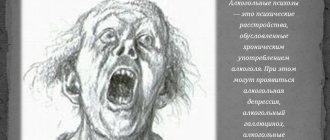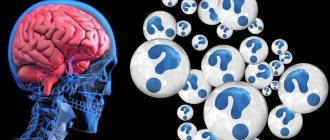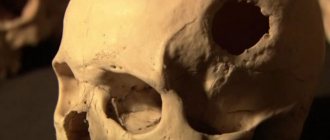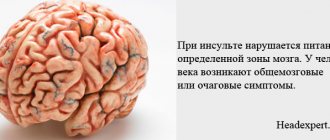How are diabetes and your memory related?
As we have known since our school days, memory directly depends on the functioning of the brain. It's clear as day. An equally common disease that can cause memory loss is impaired vascular function. This can be either atherosclerosis, which affects the blood vessels of the brain and causes disruption of its functioning, or diabetes mellitus.
In the first case, blood does not flow to your main thinking organ, which, in turn, causes interruptions in its functioning. The second case is also directly related to the activity of the gray matter: the lack of sufficient blood and nutrients flowing to the brain negatively affects your ability to remember facts and events.
Symptoms
Depending on the cause, memory loss occurs suddenly or develops gradually;
may be partial or complete, temporary or permanent. Some people suffer from anterograde amnesia, i.e. cannot remember new things or remember events that have happened since their memory loss began. Others have retrograde amnesia, where they lose memory of the past and have difficulty remembering events that happened before the memory loss began.
Old people who take many medications are at particular risk of memory loss.
When simple forgetfulness develops into a serious illness
Many people have probably heard about Alzheimer's disease. What it is? What is this disease characterized by? Memory lapses in this case are the main symptom. As you know, this disease causes a gradual deterioration in the functioning of your brain, which, accordingly, affects your intellectual abilities. First you forget small details, and then more important fragments of your life.
Unfortunately, in this case you will not be able to recover. All that is in your power is just to soften the course of the disease. Moreover, this will only become possible if you contact a specialist in time. The doctor will prescribe you a special treatment that will eliminate memory loss and the symptoms will begin to disappear.
Testing options
There are several ways to determine the root of the problem. Painless and safe, they will allow you to make the final diagnosis as accurately as possible. There are three main ones:
- CT scan;
- electroencephalography;
- X-ray examination of cerebral vessels.
Based on the results of these studies, it is possible to draw up a treatment regimen and minimize memory loss, the causes of which can be of a different nature. After all the examinations, it will be easier for the specialist to understand the problem.
What can be done?
In the event that the situation can be influenced in any way (these options include diabetes, vascular disorders and injury), you must strictly follow the instructions of your doctor. As a rule, only the systematicity of all procedures brings results.
If the root of your problem is a head injury, you need to see a psychiatrist who will conduct a comprehensive analysis of your well-being and tell you how to act in this particular situation. If the reason lies in the disruption of the blood vessels, this is a completely different matter, and a specialist in the field of neurology deals with this.
It should be noted that normalizing poor memory is a long and complex process that will require considerable effort from the patient. The thing is that, in fact, a person himself has to establish the functioning of the analytical connection between visual images and his brain. A process that occurs without problems in healthy people is very difficult for patients.
Memory deterioration does not occur out of nowhere, but is only a consequence of something larger, and therefore you should have certain ideas about the possible causes of the development of pathology before consulting a doctor. However, there are times when older people cannot answer some questions on their own. That is why the presence of close people who could help in this difficult matter is so important for them.
Treatment methods
The approach to treating ADHD is complex and versatile.
Medicines. Patients are prescribed psychostimulants, norepinephrine reuptake inhibitors, antihypertensives and antidepressants. The choice always depends on the patient’s condition and the specific manifestations of the syndrome. Age and possible side effects are also taken into account.
Psychotherapy. For ADHD, cognitive behavioral therapy, which focuses on working with consciousness, is quite effective. The essence of therapy is to cultivate awareness in a person and not allow impulsiveness to control his entire life. Classes help quite well with this.
Nutrition and dietary supplements. You can try to “go in” on the other hand - adjust your diet. The most popular recommendations are to take supplements with fish oil, iron iodine, magnesium and zinc. It is also important to avoid spikes in blood sugar (that is, avoid simple carbohydrates). But remember that diet is a supportive measure that cannot replace treatment.
Daily regime. It is very important for people with ADHD to maintain a proper daily routine. All kinds of timers, applications and organizers are 100% their inventions, which should help smooth out natural absent-mindedness and impulsiveness.
Memory lapses, the causes of which in young people are related to concomitant diseases of the body, can only be treated as a result of therapy carried out by a specialist. Diagnosis and treatment of the disease has an individual approach, so courses of medication are determined only by a qualified doctor.
Medications during treatment for memory loss are most often divided into 3 groups
- Nootropics (Nootropil, Mexidol, Phenotropil, Cinnarizine, Glycine, Cerebrolysin, Phenibut). The action of the drugs is a complex effect on the central nervous system. As a result of complex therapy, patients feel improved memory.
- Tonic drugs (Glycine, Intellan, Tanakan, Memoplant, Bilobil). Medicines have a positive effect on metabolic processes in the body.
- Vascular drugs (Isradipine, Nifedipine, Diazem, Pentoxifylline). The drugs relax vascular tissues and help increase the amount of nutrients and oxygen reaching the brain.
Traditional methods
Traditional methods for memory loss include the following recipes and products:
- Sage decoction. To prepare the decoction you need to take 1 tsp. Sage leaves and pour 200 ml of boiling water over it. Cover the container with the mixture with a lid and place in boiling water for 20 minutes. After the time has passed, let the container cool to 40 degrees, strain the mixture and take 50 ml 2-3 times a day.
- Ginseng decoction. For the decoction you need to take 2-3 tbsp. l. Grind the roots of the plant and fill them with 1.5 liters of cold water. Cook the mixture over low heat for no more than 5 minutes, after the time has passed, let it brew and strain. You need to drink the decoction 3 times a day, 1 tbsp.
- Plums. Fruits are often recommended to be consumed to improve memory, which is due to the large amount of vitamins they contain. Plums have a positive effect on blood sugar levels, memory and the digestive system.
- Green tea. Green tea contains a large number of useful substances that have an anticarcinogenic effect, have an antimutagenic effect, suppress the activation of oncogenes and malignant cell transformation. Tea also contains antioxidants that promote the natural circulation of nutrients in the body. The substance has cognitive effects and helps improve memory and concentration.
- Broccoli. The vegetable plant promotes the development of concentration and memory due to the phosphorus it contains. Broccoli is also useful for generally improving the functioning of the body due to the vitamins, amino acids, zinc and potassium in its composition.
Other methods
For amnesia associated with psychological factors, psychotherapy is used. Cognitive behavioral therapy is considered effective in working through anxiety and traumatic events.
The psychotherapist tries to help the patient cope with fears, to show his incorrect perception of the world around him, which causes a feeling of anxiety and possible memory loss. As a result of therapy, the patient learns the mechanisms by which his feelings arise and learns to control anxiety.
To generally improve memory, patients are often recommended mnemonics - a method of quickly memorizing information. The technique allows various objects and facts to be connected with each other using visual and auditory representation.
The simplest example of mnemonics is the method of memorizing the colors of the rainbow in a certain sequence using the phrase “Every Hunter Wants to Know Where the Pheasant Sits.” The highlighted first letters in each word of the phrase indicate the first letter of the name of the desired color, which makes it much easier to remember the sequence of colors in the rainbow.
Basic techniques of mnemonics:
- Rhymes. This technique will be especially useful for creative people who easily rhyme words and love to write poetry.
- Initial letters. The method is to select the first letters of their names from the objects in the sequence required for memorization and from them, in the original sequence, compose a phrase that is not related to the subject of the objects being studied. After memorizing the composed phrase by highlighting their first letters, the original sequence of objects will be remembered much easier.
- Consonances. To memorize terms or unknown words, you need to remember an easy word that will be in tune with the original one. Through association, an unknown term will easily come to mind at the right time.
- Visual memory. This technique involves carefully memorizing details, which contributes to the development of eidetic (photographic) memory. The exercise consists of looking closely at an object or person, and then reproducing what you saw with the greatest accuracy.
- Visualization. Visual associations are a well-known and effective technique for remembering information. For example, to remember a sequence of numbers, this technique consists of representing each number in the form of some object or animal (1 - count, 2 - swan, 3 - mustache, 4 - chair, 5 - star, 6 - castle, 7 - nose, 8 – glasses, 9 – ball, 10 – globe). In the mind, the sequence of associations will be remembered much better than the numbers themselves, and an additionally invented plot, where visual associations play a role in the desired sequence, will additionally strengthen the desired sequence in the mind.
- Spatial imagination. A well-known mnemonic technique is to imagine a well-known room where a person remembers the location of shelves and cabinets. To memorize, you need to mentally put the necessary information in an imaginary room in a closet or on a shelf and mentally consolidate this action. When a need for information arises, you need to mentally return to the room and get it from the right place. The technique requires training and concentration, so it may not seem effective the first time.
Etiology
Physiological reasons that can lead to the development of this symptom include:
- infectious diseases that lead to damage to the central nervous system and brain;
- surgery on the temporal lobe of the brain, which leads to short-term memory loss;
- long-term use of sedatives, tranquilizers, antidepressants;
- chronic illnesses;
- head injuries;
- improper metabolism;
- disruption of the functioning of the brain and central nervous system;
- autoimmune diseases;
- Pick's disease;
- senility;
- alcoholism and drug addiction;
- oxygen starvation;
- circulatory disorders.
Psychological factors that lead to the development of this symptom include:
- frequent stressful situations, constant nervous tension;
- chronic fatigue, frequent lack of sleep;
- strong emotional overexcitation;
- excessive mental stress.
In addition, it should be noted that memory lapses can be a cause of age-related changes.
Separately, the etiology of the development of short-term memory failures should be highlighted:
- prolonged depression;
- cardiovascular diseases;
- migraine;
- acute respiratory failure;
- hormonal stress;
- atherosclerotic vasoconstriction.
It should be noted that with this type of disorder, a person clearly realizes that he has problems with memory, may be lost in time and space, but long-term events are preserved.
Memory types
Short-term (active) memory is responsible for storing information that a person is currently thinking about, or events that he is aware of.
All recent sensations and actions are stored in a special part of the brain - the prefrontal cortex. Active memory can store data about events that occurred both a few seconds ago and months earlier. The brain accesses short-term storage of information much faster than the section responsible for long-term memory. However, the resources of the nervous system responsible for processing data in the prefrontal cortex are significantly limited. Therefore, long-term memory has a much larger capacity and can contain information such as certain facts, personal memories and the names of people you have met in the past.
How to Simply Recommend
Why the medicine does not work The key to successful treatment is, of course, following all the doctor’s recommendations and informing him of all significant changes during therapy. However, a specialist can talk as much as he wants about the regimen and duration of taking the drug, but most patients will still violate these rules. Read more
Classification
Based on the nature of the manifestation of this symptom, the following forms are distinguished:
- regressive memory loss is a temporary phenomenon, which is often a consequence of injury, surgery, or severe emotional shock;
- progressive failures - loss of some long-term memories, may develop into amnesia;
- stationary failures - a person forgets some events without the possibility of their recovery;
- fixation lapses in memory - a person cannot remember events that just happened;
- pseudo-reminiscence - memory gaps are filled with fantastic, fictitious events.
In some cases, memory loss may be an irreversible pathological process.
Symptoms
In this case, there is no general clinical picture. Symptoms will depend on the underlying factor, the type of symptom and the stage of development of the disease.
With psychological disorders, memory loss may be accompanied by the following symptoms:
- headaches for no apparent reason;
- sleep disturbance – drowsiness during the day, insomnia at night;
- sudden mood swings;
- previously unusual traits may be observed in a person’s behavior - excessive suspicion, selfishness, aggression;
- dementia;
- deterioration of cognitive abilities;
- confusion.
As a rule, memory loss after alcohol is short-term, but often a person may not remember what happened during his alcohol intoxication. Complete amnesia in alcoholism is extremely rare.
If the cause of memory loss is pathological processes of the brain or its trauma, the symptoms may be supplemented by the following signs:
- impaired coordination of movements;
- nausea, sometimes with bouts of vomiting;
- dizziness;
- impaired clarity of consciousness;
- headache.
If the above clinical manifestations are present, you should seek medical help and not self-medicate.
How common is this?
Fragmentary memory loss is very common, research shows, especially among young people who abuse alcohol.
“Between 30 and 50 percent of young people who drink alcohol say they have experienced memory loss at least once,” says Professor Kate Carey of Brown University.
Illustration copyright PA
Memory loss occurs when a certain concentration of alcohol in the blood is reached. Amnesia can result from drinking a large amount of alcohol in a short time or drinking on an empty stomach.
Memory loss can occur when the blood alcohol concentration reaches 0.2% (about 2 ppm). In the US, for example, you cannot drive a car if your alcohol concentration level reaches 0.08%.












